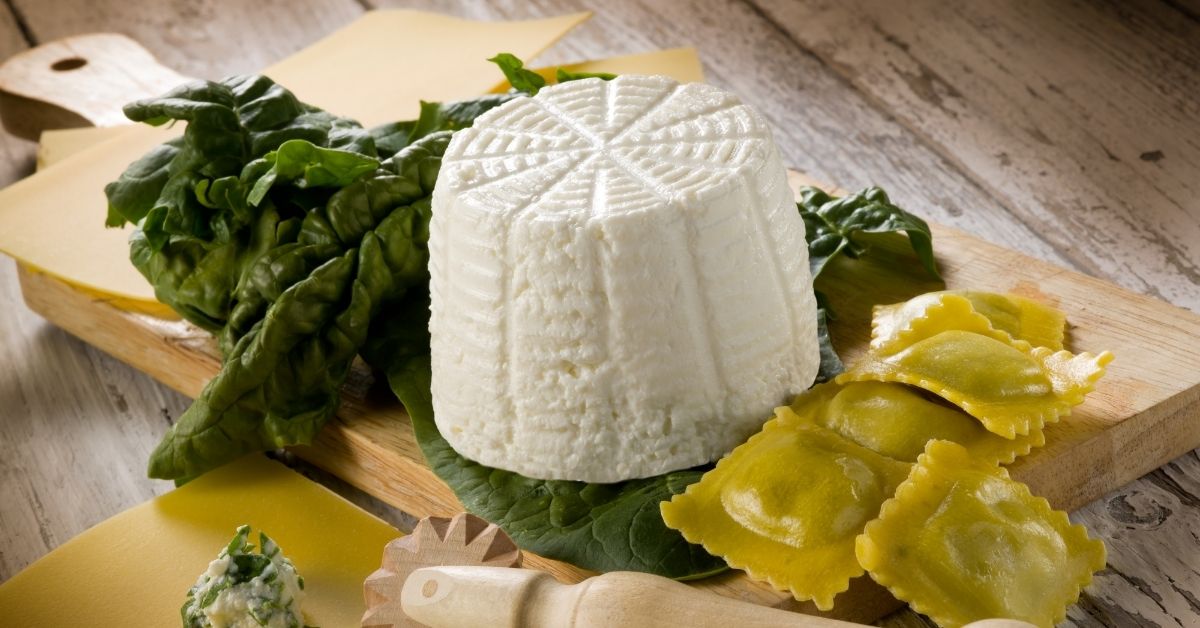How to Make Ricotta Smooth? Why Is It Grainy?

Ricotta is a type of cheese created in Italy and is a secondary milk product made of the leftover whey of the milk used to produce other cheeses. Ricotta is an excellent cheese, taste and nutrition-wise, but its consistency isn’t smooth but slightly grainy. So why is it grainy, and how to make ricotta smooth?
Straining, blending, or whisking the ricotta could make it smoother. Ricotta is grainy because it is traditionally made strained, not pressed, and that makes the cheese watery and grainy, as there is liquid. Heating the milk too fast is time-effective, but it creates grains in the ricotta and is typical for commercially produced ricotta.
I am a big fan of ricotta, grainy or not, and I am always happy to have it in my kitchen. Still, the ricotta grains are a bit of a deal-breaker for some people, and it is nice knowing that there are things you can do. In the following paragraphs, I will explain the methods for smooth ricotta and how to get there.
How Do You Make Ricotta Cheese Less Grainy?
If you dislike the grainy texture of ricotta cheese, there are a few things you can do about it. The simplest way to make it smoother is to strain it in the fridge.
Place a cotton towel in a colander and put your ricotta on it. Put the colander in the fridge and leave it there for a couple of hours. This way, your ricotta will release the excess liquid and become smoother and firmer.
Another method to get rid of ricotta grains is to whisk or blend them. You can whisk your ricotta manually, or you can use a mixer or a blender. The mechanical processing will dissolve the grains and make your ricotta smooth and creamy.
However, I must stress that whisking/ blending your ricotta will drastically change its consistency, so you might not be able to use it for what you originally intended.
Pressing the ricotta with a fork until it homogenizes is a good way, but it will take more time.
How to Make Ricotta Cheese Spreadable for Toast?
As a spread, ricotta cheese does astoundingly well. Making your ricotta spreadable is pretty simple since the cheese itself is soft and easy to work with. Cover your toast bread with spreadable ricotta, and it will be an absolute delight.
If you want a thicker spread, you can just press the ricotta with a fork until the grains dissolve and your ricotta homogenizes. Add some herbs, and you have a ricotta spread.
If you want a creamier spread, you can whisk your ricotta and add a few drops of olive oil. This will give it a fluffy and, at the same time, buttery consistency.
If you want to take this one step further, you can place the ricotta and olive oil in a saucepan and stir it on the stove for about 5 minutes. This way, you will get a refined and soft ricotta spread.
Blending your ricotta is also a great way to make it spreadable. Blend for five to ten seconds and check the consistency. Blended ricotta resembles crème fraiche, so you can add some lemon juice to make it even fresher.
Whichever method you choose, you can season your ricotta the way you like. Parmesan would also be a great addition to your spread. Melted butter is another good idea, but since ricotta is pretty fatty, don’t add too much, one tbsp. will be enough.
Can You Warm up Ricotta Cheese?
Ricotta does excellently at increased temperatures. Ricotta doesn’t melt, but rather, it becomes creamy. Therefore you can fry it, as well as bake it.
Place it on top of your lasagna, or place it in your pasta sauce and just enjoy. Ricotta fritters are always a good idea, as well as ricotta dip.
Can You Melt Ricotta Cheese?
Ricotta doesn’t melt the way other cheeses do. While other cheeses disintegrate, stick, and burn. Ricotta is perfect for cooking; it keeps its integrity but becomes creamy and soft.
Can You Eat Ricotta Cheese Raw?
Ricotta cheese is fresh, mildly tangy, and discretely sweet, meaning that you can consume it fresh, as well as cooked. It is easy to combine because it doesn’t strongly express flavor. It is an excellent addition to include freshness in your meal.
Will Ricotta Thicken a Sauce?
Ricotta is the perfect addition to a sauce. Because of its creaminess when cooked, it can substitute for cream or milk in a creamy sauce. If your sauce is too thin or runny, feel free to put ricotta in it.
Can You Use Ricotta Instead of Heavy Cream?
Ricotta is the perfect substitute for heavy cream for three reasons. First, it excellently mimics its creaminess and thickness; second, it is less fatty than heavy cream; third, it gives the dish a distinct freshness.
